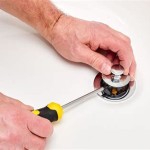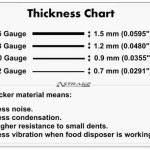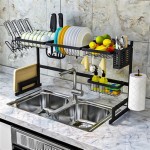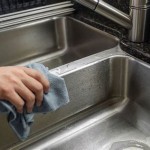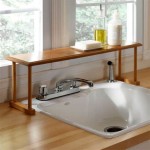Ants Around The Kitchen Sink
Discovering ants trailing around the kitchen sink is a common household nuisance. These tiny invaders are often attracted to the readily available food and water sources found in this area. Understanding why ants are drawn to the sink and implementing effective prevention and control methods can help maintain a clean and pest-free kitchen.
Several factors contribute to ant infestations around kitchen sinks. Residual food particles, even microscopic crumbs, provide a readily accessible food source. Spilled sugary drinks, sticky residues from dish soap, and lingering moisture create an ideal environment for ants to thrive. Leaky pipes under the sink contribute to the damp conditions ants prefer. Open food containers, improperly sealed garbage disposals, and overflowing trash cans further exacerbate the problem by providing easy access to food and water.
Identifying the ant species is crucial for effective control. While many ant species are attracted to kitchen sinks, some common culprits include odorous house ants, pavement ants, and pharaoh ants. Odorous house ants, as their name suggests, emit a distinct, unpleasant odor when crushed. Pavement ants, typically black or dark brown, often nest in cracks in pavement and sidewalks. Pharaoh ants are tiny, light yellow to reddish-brown ants known for their ability to establish multiple colonies within a building.
Proper sanitation is the first line of defense against ant infestations. Regularly wiping down the sink area, countertops, and surrounding surfaces with a disinfectant cleaner removes food residues and sticky spills. Promptly cleaning up any food or drink spills prevents ants from being attracted to the area. Emptying trash cans frequently and ensuring they are tightly sealed eliminates another potential food source.
Storing food properly is essential to deterring ants. Keeping food in airtight containers prevents ants from accessing it. Avoid leaving fruits and vegetables out in the open. Pet food should also be stored in sealed containers and any spilled pet food should be cleaned up immediately. Regularly cleaning the pantry and removing any spilled or expired food items further reduces the attractiveness of the kitchen to ants.
Addressing moisture issues is crucial for ant control. Repairing leaky faucets and pipes eliminates a primary water source for ants. Ensuring proper ventilation under the sink can help reduce moisture buildup. Using a dehumidifier in particularly humid areas can further reduce moisture levels, making the environment less hospitable to ants.
Several methods can be employed to eliminate existing ant trails and deter future infestations. Natural remedies, such as vinegar and lemon juice, can disrupt ant trails and deter ants with their strong scents. Commercial ant baits can be effective in attracting and eliminating ants, but should be used with caution, especially around children and pets. Insecticidal sprays can be used to target ant trails and entry points, but it's important to follow the product instructions carefully and ensure proper ventilation.
Professional pest control services can be beneficial for persistent or severe infestations. Pest control professionals can identify the ant species, locate the nest, and implement targeted treatment strategies. They can also provide advice on preventative measures to avoid future infestations. Regular inspections by pest control professionals can be helpful in identifying and addressing potential ant problems before they become major infestations.
Maintaining a clean and dry environment around the kitchen sink is the most effective way to prevent ant infestations. Diligent sanitation practices, proper food storage, and addressing moisture issues are key to deterring these persistent pests. By implementing preventative measures and utilizing appropriate control methods, homeowners can maintain an ant-free kitchen and enjoy a clean and sanitary food preparation area.
Regularly inspecting potential ant entry points, such as cracks and crevices around the sink and windows, is also important. Sealing these entry points with caulk or other sealant can prevent ants from accessing the kitchen. Keeping vegetation trimmed back from the exterior of the house can also help reduce ant populations near the home. Removing standing water around the foundation of the house eliminates another potential water source for ants.
Understanding ant behavior can also contribute to effective control. Ants leave pheromone trails to guide other ants to food and water sources. Cleaning these trails with a solution of vinegar and water disrupts the communication between ants and can help deter them from returning to the area. Observing ant trails can also help identify their entry points and nesting locations, allowing for targeted treatment.

Why Do I Keep Seeing Very Tiny Ants Around My Kitchen Sink

11 Ways To Get Rid Of Ants In The Kitchen White Glove Cleaner

Are Ants Drawn To The Kitchen Sink Green Pest Solutions

How To Get Rid Of Ants In The Kitchen Pest Pros Best Control Greater Seattle Portland

Ants In Your Pantry Gregory Pest Solutions

How Do I Get Rid Of Sugar Ants For Good The Killers Pest Control

The Dos And Don Ts Of Ant Control A Comprehensive Guide For Maine Homeowners

What Attracts Ants Kitchen Pest Control

Why Are Ants Attracted To Your Kitchen Sink

What You Should Do With Ants Present Under The Kitchen
